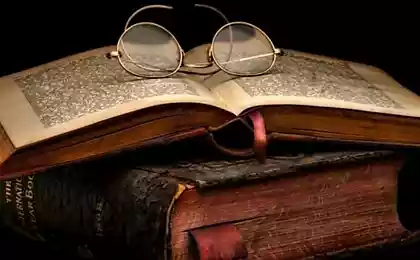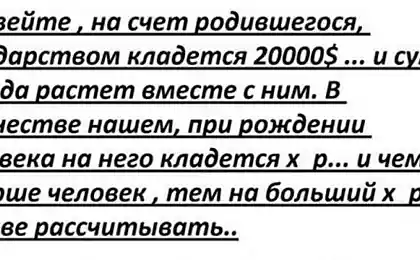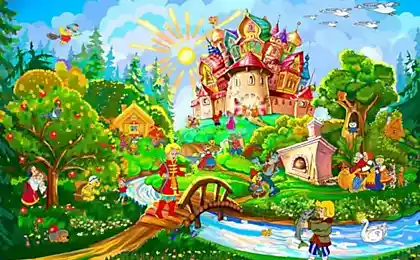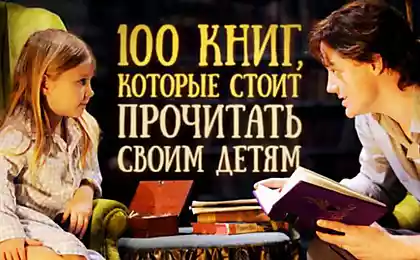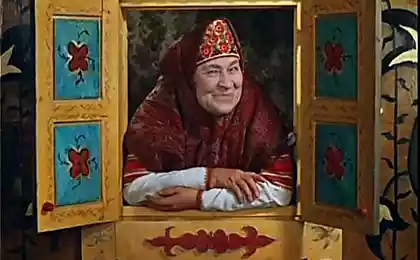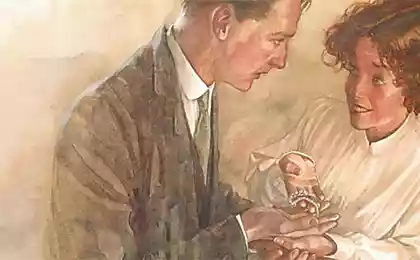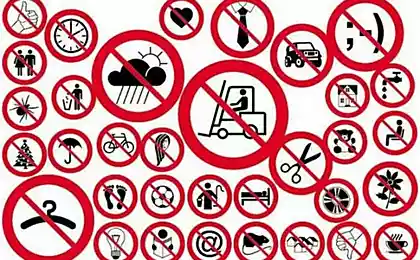1750
Russian tales
"In a fantastic city to live shorty. Shorty called them because they were very small. Every little man was the size of a small cucumber. In the city they had a very nice ... "- so begins the tale all the favorite Nikolay Nosov about the adventures of Dunno. And you know what the basis for his work, the author took the book Anna Chwolson "Kingdom of babies'? And he was not the sole author of this. Let's see what it was: a rip-off or individual creativity Nikolay Nosov. "The Adventures of Dunno and His Friends", in 1953-1954.
Who borrowed
According to the writer Stanislaw Rassadina, Nosov confessed to him that as a child loved the book writer Anna Chwolson "Kingdom of babies" (1889). After the revolution, the book was republished in Russia.
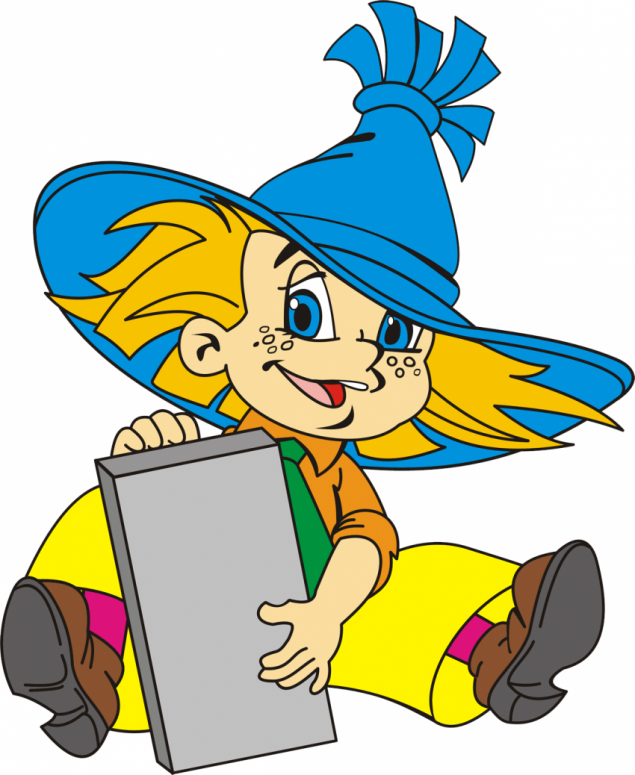
What is the difference
In Chwolson baby-elves with funny names Murzilka, Chumilka-Sage, and others. Travel around the world and constantly get into some stories. The protagonist - Murzilka - has the nickname of "empty head": Fashionable, bouncer, buzotёr and, in general, a negative character. In Nosov Dunno also boast healthy and lazy. But he is kind, conscientious, responsive. This is the life story of the ideal of the commune.

Alexander Pushkin. "The Tale of the Dead Princess and the Seven Knights" 1833
Who borrowed
Pushkin himself claimed that the idea of this tale he learned from the tales he had heard from the nurse Arina. But the plot of Pushkin is very closely linked to the story of the Brothers Grimm fairy tale "Snow White and the Seven Dwarfs," written in 1812
What is the difference
The differences are minimal. Pushkin - the heroes, the brothers Grimm - gnomes; Pushkin stepmother herself dying of sadness and anger, from the Grimm its penalty; Pushkin prince Elisha consciously looking for a loved one, the prince Grimm chances on Snow White. But a happy ending anywhere!

Alexei Tolstoy. "The Golden Key, or Adventures of Pinocchio", 1936
Who borrowed
Alexei Tolstoy and did not hide the fact that writing was inspired by the Adventures of Pinocchio C. Collodi Italian book "The Adventures of Pinocchio. History wooden dolls "(in Russia it was published in 1906).
What is the difference
In Collodi's Pinocchio, carved out of logs becomes a living boy going through severe tests (up to life in the doghouse), and levies a laziness, a desire to lie, stubbornness, and so on. D. Readers are invited Bildungsroman. Tolstoy Pinocchio and wood remains - the writer turned adventure novel (or novel way) about how to enable mutual kindness and find the key to happiness.
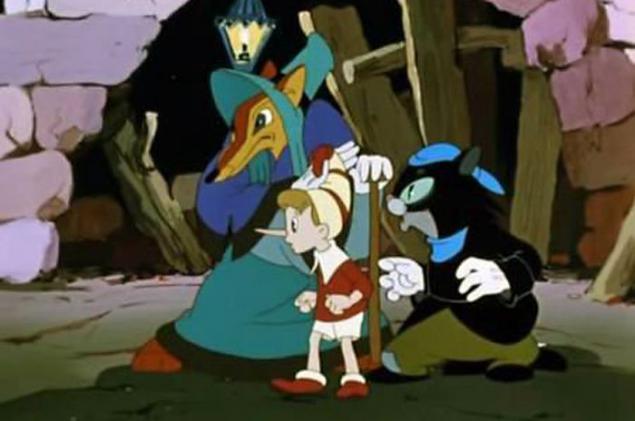
Lazar Lagin. "Old Hottabych" 1938
Who borrowed
In 1900 in England came out fantastic story "Copper pitcher" while the famous writer F. Anstey. And that, in turn, was inspired by the story of one of the fairy tales "Thousand and One Nights».
What is the difference
In Anstey genie imprisoned in a copper jug of King Solomon, frees young London architect who does not have enough money for a successful marriage. Jeanne first helps him, and then it turns extremely grumpy type and tries to kill his liberator. In Lagin genie Hassan Abdurrahman ibn Khattab releases in Soviet Moscow pioneer Volka. And Hottabych reforge the old regime in the Soviet man.
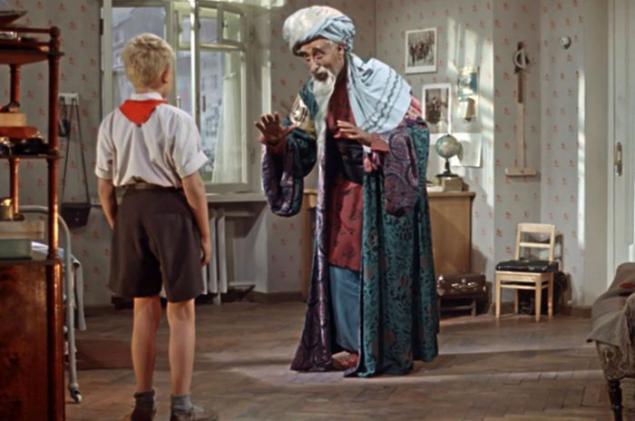
Alexander Volkov. "The Wizard of Oz" in 1939
Who borrowed
"The Wonderful Wizard of Oz" F. Baum came in 1900, house where the girl lived with his family and dog, the hurricane moves into fairyland. Now she must find the Wizard of Oz - it will help to return home. Along the way she saves the Scarecrow, the Tin Woodman and the Cowardly Lion.
What is the difference
In Baum's contemporaries subtracted sharp political satire on the politicians. In Volkov girl Ellie must overcome the hardest trials to earn the right to seek the assistance of a wizard.
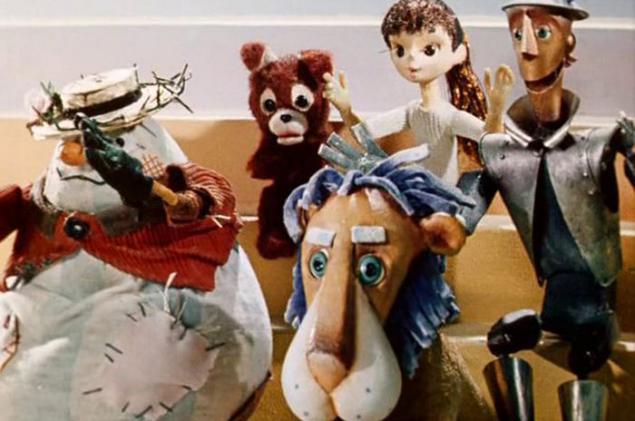
Expert opinion
Andrey Usachev, writer:
- Relationship to copyright in the last century was different - a good idea of another writer colleague picks up and copied. Such "perepevki" engaged and Alexander Pushkin and Goethe. And all this calmly. Especially the young literature (literature and the Soviet Union in the 1930s. Was young) is not out of the blue there, and looking at what the foundation of a foothold.
If we talk about Nikolai Nosov and Dunno, the book Anne Chwolson I would put C grade - boring adventure, the characters are not written out, far from the literary language. A Nosov from this polukomiksnoy things done brilliant work written magnificent language. Nosov can be considered the creator of the language of children's literature - and this is the most important achievement.
A slightly different story Lagin and Hottabych. "Copper pitcher" Anstey - wonderful novel. Lagin is made out of it, so to speak, a momentary affair, placing it in the Soviet reality: modern children who do not know, who are the pioneers, to read it, "Hottabych" boring. Lagin merit that he "translated" Anstey novel on child language.
More interesting than the story of "The Adventures of Pinocchio" Tolstoy. Literary critic Myron Petrovsky study the "Book of Our Childhood" has come to a curious conclusion: Tolstoy in The Adventures of Pinocchio hid parody unpleasant to him writers and artists of the time - at the theater Karabas-Barabas he meant, for example, the theater of Meyerhold, and so on. D. That Tolstoy is a thing to be not quite children. As Volkov "The Wizard of Oz", Tolstoy of the beautiful myth, full of philosophy, side stories, digressions, made a very strong love affair with a slender plot and cut off a lot of "extra", he thought lines. The novel has become easier to read, but deep philosophical meaning was lost.
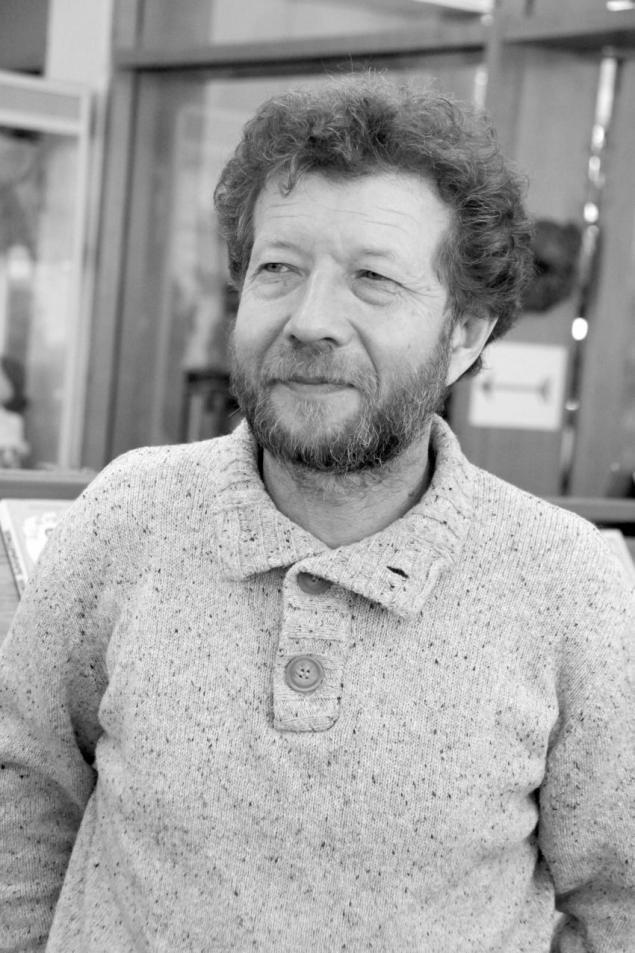
Source: www.aif.ru
Who borrowed
According to the writer Stanislaw Rassadina, Nosov confessed to him that as a child loved the book writer Anna Chwolson "Kingdom of babies" (1889). After the revolution, the book was republished in Russia.

What is the difference
In Chwolson baby-elves with funny names Murzilka, Chumilka-Sage, and others. Travel around the world and constantly get into some stories. The protagonist - Murzilka - has the nickname of "empty head": Fashionable, bouncer, buzotёr and, in general, a negative character. In Nosov Dunno also boast healthy and lazy. But he is kind, conscientious, responsive. This is the life story of the ideal of the commune.

Alexander Pushkin. "The Tale of the Dead Princess and the Seven Knights" 1833
Who borrowed
Pushkin himself claimed that the idea of this tale he learned from the tales he had heard from the nurse Arina. But the plot of Pushkin is very closely linked to the story of the Brothers Grimm fairy tale "Snow White and the Seven Dwarfs," written in 1812
What is the difference
The differences are minimal. Pushkin - the heroes, the brothers Grimm - gnomes; Pushkin stepmother herself dying of sadness and anger, from the Grimm its penalty; Pushkin prince Elisha consciously looking for a loved one, the prince Grimm chances on Snow White. But a happy ending anywhere!

Alexei Tolstoy. "The Golden Key, or Adventures of Pinocchio", 1936
Who borrowed
Alexei Tolstoy and did not hide the fact that writing was inspired by the Adventures of Pinocchio C. Collodi Italian book "The Adventures of Pinocchio. History wooden dolls "(in Russia it was published in 1906).
What is the difference
In Collodi's Pinocchio, carved out of logs becomes a living boy going through severe tests (up to life in the doghouse), and levies a laziness, a desire to lie, stubbornness, and so on. D. Readers are invited Bildungsroman. Tolstoy Pinocchio and wood remains - the writer turned adventure novel (or novel way) about how to enable mutual kindness and find the key to happiness.

Lazar Lagin. "Old Hottabych" 1938
Who borrowed
In 1900 in England came out fantastic story "Copper pitcher" while the famous writer F. Anstey. And that, in turn, was inspired by the story of one of the fairy tales "Thousand and One Nights».
What is the difference
In Anstey genie imprisoned in a copper jug of King Solomon, frees young London architect who does not have enough money for a successful marriage. Jeanne first helps him, and then it turns extremely grumpy type and tries to kill his liberator. In Lagin genie Hassan Abdurrahman ibn Khattab releases in Soviet Moscow pioneer Volka. And Hottabych reforge the old regime in the Soviet man.

Alexander Volkov. "The Wizard of Oz" in 1939
Who borrowed
"The Wonderful Wizard of Oz" F. Baum came in 1900, house where the girl lived with his family and dog, the hurricane moves into fairyland. Now she must find the Wizard of Oz - it will help to return home. Along the way she saves the Scarecrow, the Tin Woodman and the Cowardly Lion.
What is the difference
In Baum's contemporaries subtracted sharp political satire on the politicians. In Volkov girl Ellie must overcome the hardest trials to earn the right to seek the assistance of a wizard.

Expert opinion
Andrey Usachev, writer:
- Relationship to copyright in the last century was different - a good idea of another writer colleague picks up and copied. Such "perepevki" engaged and Alexander Pushkin and Goethe. And all this calmly. Especially the young literature (literature and the Soviet Union in the 1930s. Was young) is not out of the blue there, and looking at what the foundation of a foothold.
If we talk about Nikolai Nosov and Dunno, the book Anne Chwolson I would put C grade - boring adventure, the characters are not written out, far from the literary language. A Nosov from this polukomiksnoy things done brilliant work written magnificent language. Nosov can be considered the creator of the language of children's literature - and this is the most important achievement.
A slightly different story Lagin and Hottabych. "Copper pitcher" Anstey - wonderful novel. Lagin is made out of it, so to speak, a momentary affair, placing it in the Soviet reality: modern children who do not know, who are the pioneers, to read it, "Hottabych" boring. Lagin merit that he "translated" Anstey novel on child language.
More interesting than the story of "The Adventures of Pinocchio" Tolstoy. Literary critic Myron Petrovsky study the "Book of Our Childhood" has come to a curious conclusion: Tolstoy in The Adventures of Pinocchio hid parody unpleasant to him writers and artists of the time - at the theater Karabas-Barabas he meant, for example, the theater of Meyerhold, and so on. D. That Tolstoy is a thing to be not quite children. As Volkov "The Wizard of Oz", Tolstoy of the beautiful myth, full of philosophy, side stories, digressions, made a very strong love affair with a slender plot and cut off a lot of "extra", he thought lines. The novel has become easier to read, but deep philosophical meaning was lost.

Source: www.aif.ru
